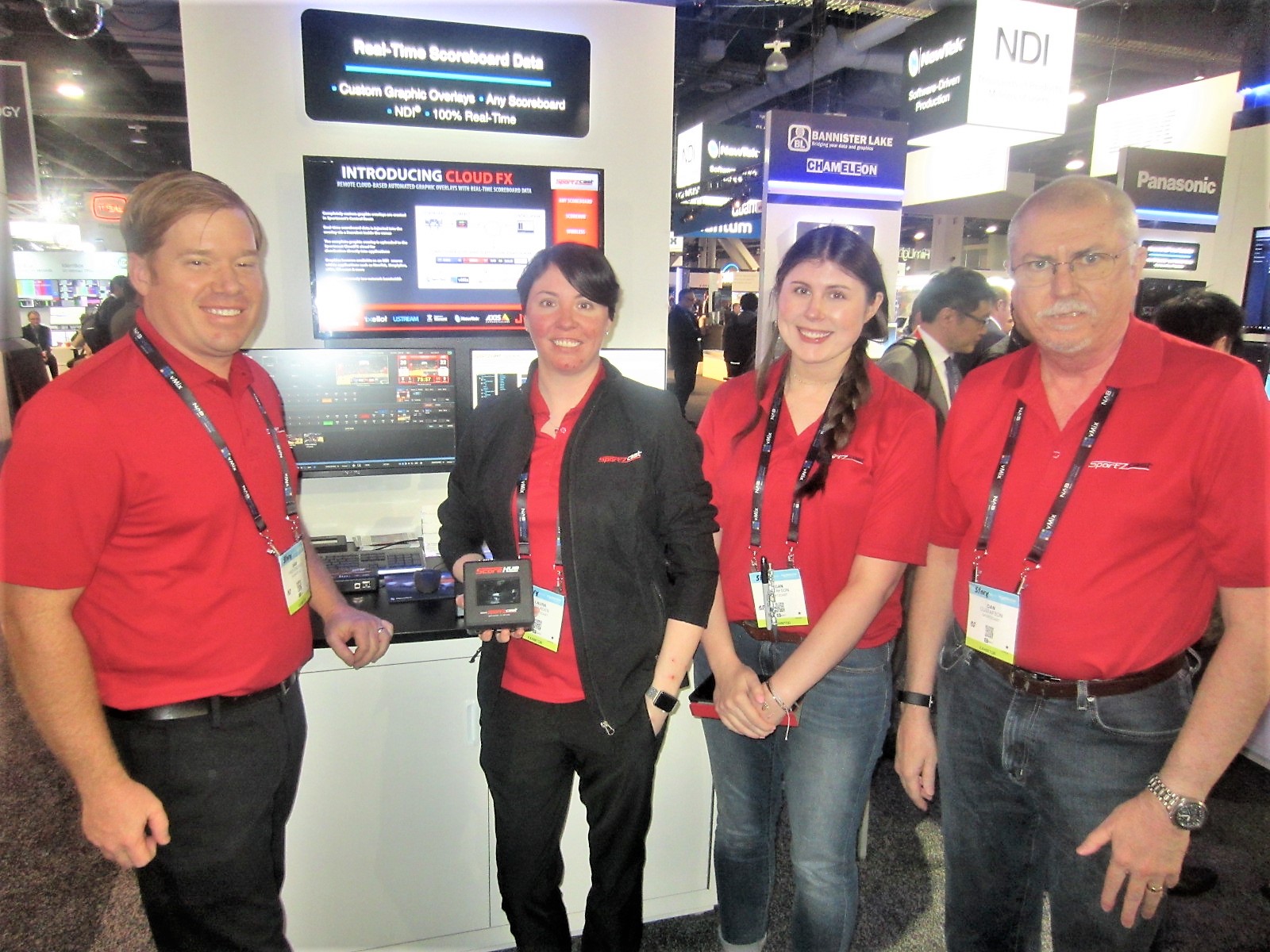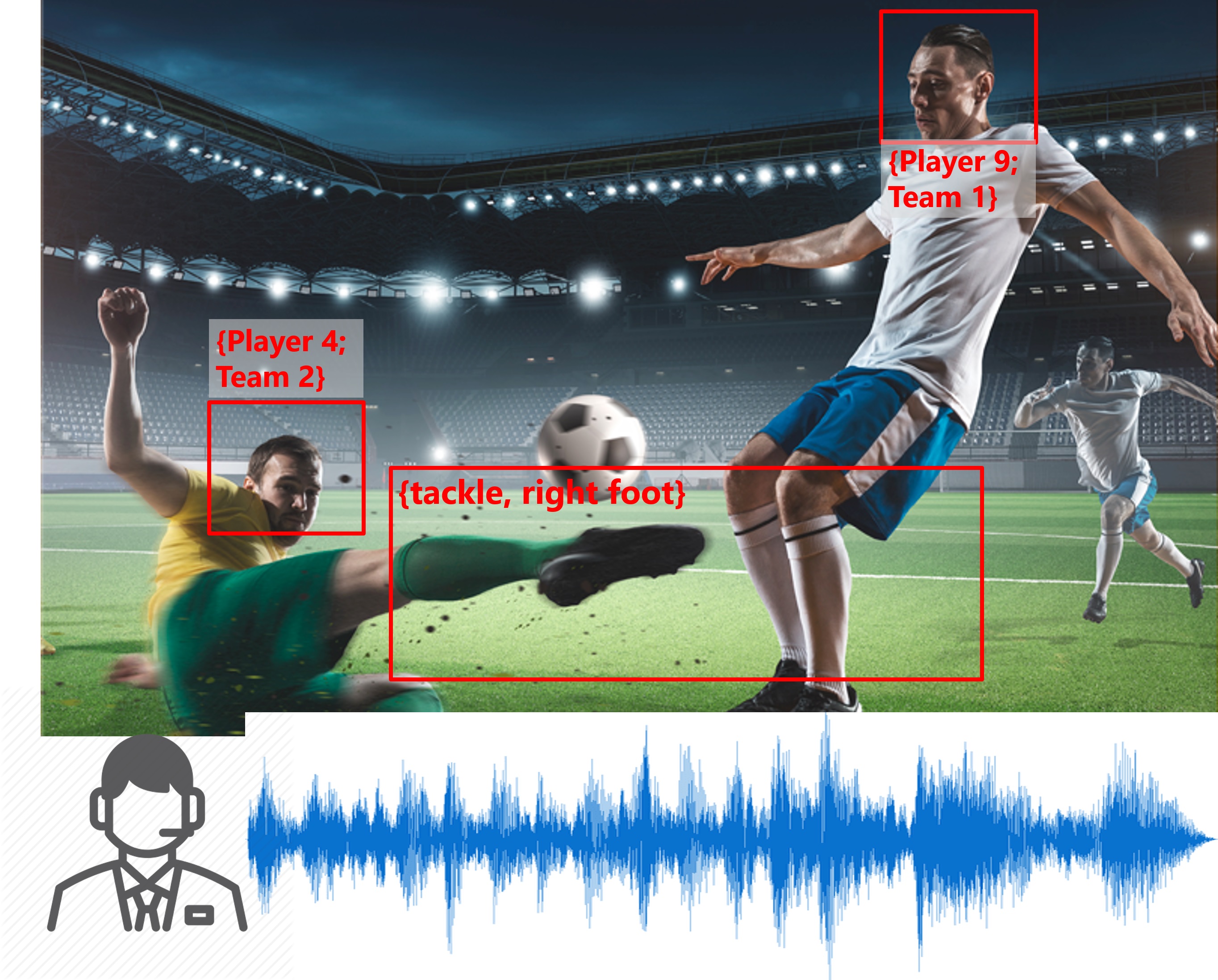NAB: What’s New in the Sports Toolbox
LAS VEGAS—While attendees at the 2019 NAB Show milled the floor by day and partied into evening, players large and small in the broadcast sports market presented their newest wares to take the user experience to the next level.
While the larger players tended to promote product upgrades, smaller companies promoted exciting technologies that, if not necessarily new, were making further inroads into the market.
ENHANCED VIEWS
Speaking of upgrades, at NAB ’19 ChyronHego focused on promoting its Paint 7.5 sports video telestration and analysis solution, “which includes enhanced tag and text features that bind to multiple data sources, on multiple rows of text and all parameters from the 3-D model,” said spokesperson Olivier Cohen.
Also on the company’s plate was Virtual Placement 7.1, which Cohen called a “simple-to-use solution” that allows for the placing of virtual elements into a live scene, such as sponsor advertisements (see the sidebar section about Anzu). Scene tracking, ChyronHego’s latest method of optical tracking, allows virtual placement to gather metrics without using pitch lines or sensors.
ChyronHego also featured Click Effects PRIME 3.5, an arena graphics creation and custom digital display control solution noted for its single-click action. “While competing solutions force you to script every configuration change, Click Effects PRIME’s no-scripting approach to data-binding and extremely low operating cost means fan engagement is always your first priority,” said Cohen. “[It’s] a powerful resolution and format agnostic graphics system for the sports arena that allows graphics and clips to play out in HD, 4K, HDR via SDI, IP 2110-2022-6, DVI or NDI, with a high level of channel density.”
EVS showcased how its latest VIA technology connects creative teams, reduces technical demands and enables more efficient live IP-based productions. “The new XNet-VIA Ethernet-based live media sharing network offers unique live control over any XT/XS-VIA production servers available on a network,” said Sébastien Verlaine, marketing & communications manager, EVS, “whether working in HD, full HD and UHD-4K.”

The company launched a new, flexible ingest-to-post solution for multicam studios, combining two new products: XS-NEO, its first software-defined server relying on the new VIA software engine, hybrid IP/SDI connectivity, simultaneous multiformat support including cinematic 24p frame rate; and IPD-VIA Ingest, the first application of its next-generation of EVS Media Asset Management relying on the VIA platform, with a brand-new HTML-5 web browser, enabling intuitive control over content.
EVS also demonstrated some of its latest development in AI relating to the control of robotic cameras for unified production operations.
The big news from Ross Video was the acquisition of U.K.-based Piero Sports Graphics, a sports analysis toolset, from Red Bee Media of London. It’s used by broadcasters to provide audiences with new angles and virtual views of sports events through 3-D graphics and image recognition; and by sports teams as a coaching tool to guide players and improve performance.
Kevin Cottam, director of sports and live events for Ross, said the acquisition “is a perfect complement to our industry-leading XPression Graphics and VS/AR offerings” because it offers customers a new avenue for storytelling and sponsorship engagements.
PLUG IT
Smaller companies also offered upgrades to existing technologies at NAB. SportzCast provides real-time scoreboard data for broadcasts and webcasts, now with its updated ScoreHub technology.
That may seem a rudimentary function, but consider the vastness of that market. SportzCast Director of Marketing and Sales Sam Provencher said that device is designed to work with “about 150 types of scoreboards across the U.S. Daktronics, for instance, has about 50 models, all with individual specs. ScoreHub can pull the data out of every one.”
While most professional and major college stadiums offer LED scoreboard technology, “we still have more than 1,000 clients that use matrix boards,” Provencher said, like colleges, high schools, the minor league franchises, etc.
What separates SportzCast in the market, he said, is that ScoreHub connects physically to any technology at the scorer’s table, in the press box, etc., and that the new model is wireless and works with systems that cover “about 99% of the U.S., and we’re adding more overseas.”
While the bulk of the company’s profits come from working with production trucks at large venues for ESPN, Fox, regional sports nets, etc., the 10-year-old Winter Springs, Fla.-based company has always honed in on smaller markets. “Plenty of small venues now have an LED board, too,” Provencher said, “and we can often take data from one venue and send it to a number of other schools in a school district, for instance, that present real-time scores and data on their websites.”
AI-DRIVEN
Tedial showcased SMARTLIVE, a live sporting event production tool that acquires data from various sources and automatically sets up its logging screen for multiple uses. It’s 100% compatible with EVS data, according to Jay Batista, general manager of U.S. operations, and relies on artificial intelligence for speech-to-text commentary and annotates video proxy, both in a fraction of a second. “That allows users to set key words and key events―such as the offensive line of a football team getting into the set position, for instance―and automatically make a clip; then use those, with like clips, to make automatic highlight reels,” Batista said. “The reels are then used for production in the truck or can be set as a social media campaign that enables the insertion of advertising.”

As for the AI angle, Batista pointed out that SMARTLIVE accentuates production and doesn’t eliminate the human element. “It doesn’t replace people in the truck,” he said. “It triples or quadruples their output.”
Batista also said it’s a great tool for smaller productions, like a small college basketball game. “It’s a software-as-a-service tool that’s meant to be connected to a truck with EVS. It’s also a new key to saving truck content that has traditionally been discarded, as it expands the truck’s capabilities to work in tandem with the studio.”
Tedial is set to roll SMARTLIVE out “by June to three customer locations,” he said. What’s next? IBC this fall and the intro of multi-camera, as well as multi-venue, feeds, “which will allow the user to garner content from 10 games at once.”
MORE CAPACITY
A product like SMARTLIVE might pique the interest of Fred Gerling, president of Sunbury, Ohio-based Gerling & Associates (G&A), who builds trucks for living and noted a shift in that market.
“What I learned at NAB this year was quite a surprise,” said Gerling, “and that was that large clients want more space in their trucks, especially when they’re working on big shows” for the NFL, PGA, NHL, etc. “They want more seating capacity and more space. I’m really surprised that people still want more space, [because] two years ago I thought they didn’t.”
But sometimes, a surprise is what a person gets for thinking. “Eight years ago I didn’t think G&A would be building anything but [remote integration] units by 2019,” he said. “As replay is such a big part of pro sports in 2019, however, we find replay consoles are now larger than production or graphics areas. Thus, more space is required.”
As for clients wanting bigger, Gerling mentioned the company developed marketing trailer widths of more than 120 inches on each side of a trailer.
“When I mentioned that at NAB, clients like Lyon Video, F&F Productions, Mobile TV Group, NEP and Game Creek Video got all over me for not getting back to them with these new designs,” he said. “The normal square footage we have with a big Expando is about 800 total; my mobile marketing trailers are 1,600 square feet. Now, my TV production clientele want to see those groundbreaking designs,” he said.
Speaking of Gerling’s clientele, he’s “amazed” that those large clients all want new units―all at the same time. “I’ve never had all of them in our shop simultaneously, and some have more than one under construction. We’re custom building nine trailers right now, with 40 more projects in the queue.”
Why the boom? It all comes down to the viewer’s desire for more graphics, more angles, more shots.
“Hockey for example, used to need only one large trailer per show,” Gerling said, “now it’s three or four for the playoffs. They’re using more split feeds and more graphics, but the increase is mainly due to the demand for more replays, thus more cameras, equipment, etc.”
Find out about what the NAB Show offered for esports here.
Get the TV Tech Newsletter
The professional video industry's #1 source for news, trends and product and tech information. Sign up below.
Mark R. Smith has covered the media industry for a variety of industry publications, with his articles for TV Technology often focusing on sports. He’s written numerous stories about all of the major U.S. sports leagues.
Based in the Baltimore-Washington area, the byline of Smith, who has also served as the long-time editor-in-chief for The Business Monthly, Columbia, Md., initially appeared in TV Technology and in another Futurenet publication, Mix, in the late ’90s. His work has also appeared in numerous other publications.

